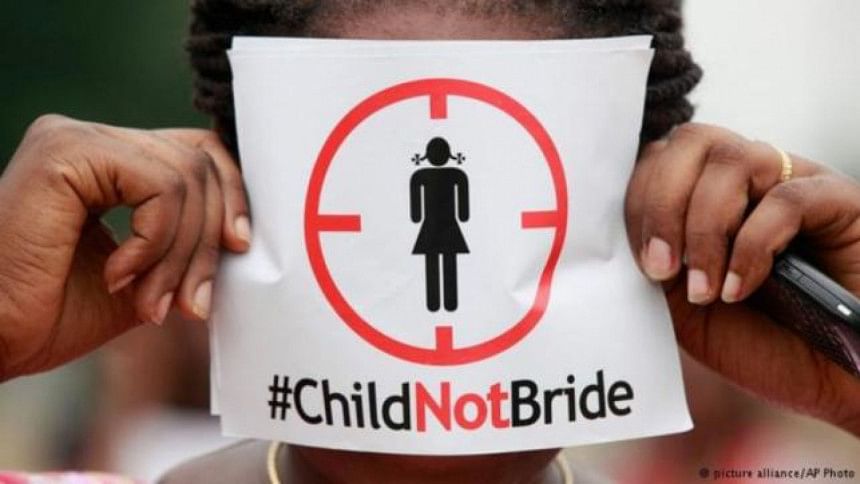The problem with the Child Marriage Act

Child marriage law in Bangladesh has recently come under wide scrutiny from national and international human rights activists and organisations. This is because on November 24, the Cabinet of Bangladesh accepted a draft legislation which "poses grave risks to girls by creating vague exceptions to the country's ban on child marriage, and even punishing the victims" (Huge Step Backwards on Child Marriage in Bangladesh, Human Rights Watch, 2016). While this is certainly true, the existing child marriage law is in itself problematic in a way that has been underemphasised and hence underreported.
Child marriages in Bangladesh are primarily regulated by the Child Marriage (Restraint) Act 1929, which is often understood (by lay persons, documentarians and activists) as outlawing child marriage. However, this is simply untrue as the Act only sets minimum ages of marriage for both sexes (21 for males and 18 for females), and itself states that it is "an Act to restrain the solemnisation of child marriages". It does so by prescribing punishments for all categories of persons who may be involved in the child marriage process. This includes any [adult] person who marries a minor, any person who "conducts" any child marriage and any lawful or unlawful parent/guardian who permits the child marriage to occur or "negligently fails to prevent it" from taking place. These provisions are indeed quite far-reaching, especially for parents and guardians, since they have both a positive and negative obligation under this Act. Crucially, the Act remains silent on the legal status of child marriages solemnised in contravention of the Act. So while persons involved in solemnising the marriage are acting illegally, the Act does not nullify or void the nikah contract and hence the marriage itself remains legal.
One may wonder why the 1929 Act chose to severely restrain child marriages instead of categorically invalidating them or why it was not followed by a subsequent Act of Parliament to that effect. Perhaps, the Legislature's reluctance is to be understood in light of its desire to not risk tampering with divine sharia law and creating a conflict-of-laws scenario. This is because child marriages remained generally permissible in classical sharia, just like it was in most legal systems in the pre-modern period. The supremacy of sharia law in family law matters in Bangladesh is evinced by the Muslim Personal Law (Shariat) Application Act 1937 which declares Shariat to be the governing rule for Muslims in all questions regarding personal and family law matters such as marriage (s2, Muslim Personal Law (Shariat) Application Act 1937).
Whether it is an anomaly in the law or a deliberate omission, empirical evidence clearly exposes the futility of the 1929 Act in restraining child marriages. As per UNICEF, Bangladesh has the highest rate of marriage comprising girls below the age of 15 and the second highest rate of child marriage in the world, behind only Niger (United Nations Children's Fund, Ending Child Marriage: Progress and prospects, UNICEF, New York, 2014). This translates to one in every three girls being married off before fifteen, and two in three girls being married off before they reach eighteen, the ostensibly legal age of marriage.
Arguably, explicit non-recognition of child marriages, in conjunction with the existing provisions in the 1929 Act, would have been the strongest and most effective restraint against the epidemic of child marriages in Bangladesh. This is because while parents (and other parties to or facilitating child marriages) may willingly act in contravention to the 1929 Act they know they will likely escape punishment due to weak law enforcement and that the (child) marriage itself would remain valid. If the child marriages are never valid to begin with, social stigma of cohabitation and sex outside marriage might work as a disincentive towards facilitating child marriages in the first place. Invalidating such marriages would also directly nullify other rights and obligations which arise due to wedlock such as inheritance rights, legitimacy of children, maintenance rights, etc.
The problem is quite simple: while persons enabling child marriages may face punishments, the [child] marriage itself remains perfectly legal in Bangladesh. As such, until and unless marriages involving minors are not categorically invalidated, the fight against the epidemic of child marriages can never truly begin.
The writer is a trainee-advocate at Chancery Chambers in Bangladesh and a legal volunteer at the Bangladesh Society for the Enforcement of Human Rights (BSEHR - Manabadhikar).

 For all latest news, follow The Daily Star's Google News channel.
For all latest news, follow The Daily Star's Google News channel. 



Comments